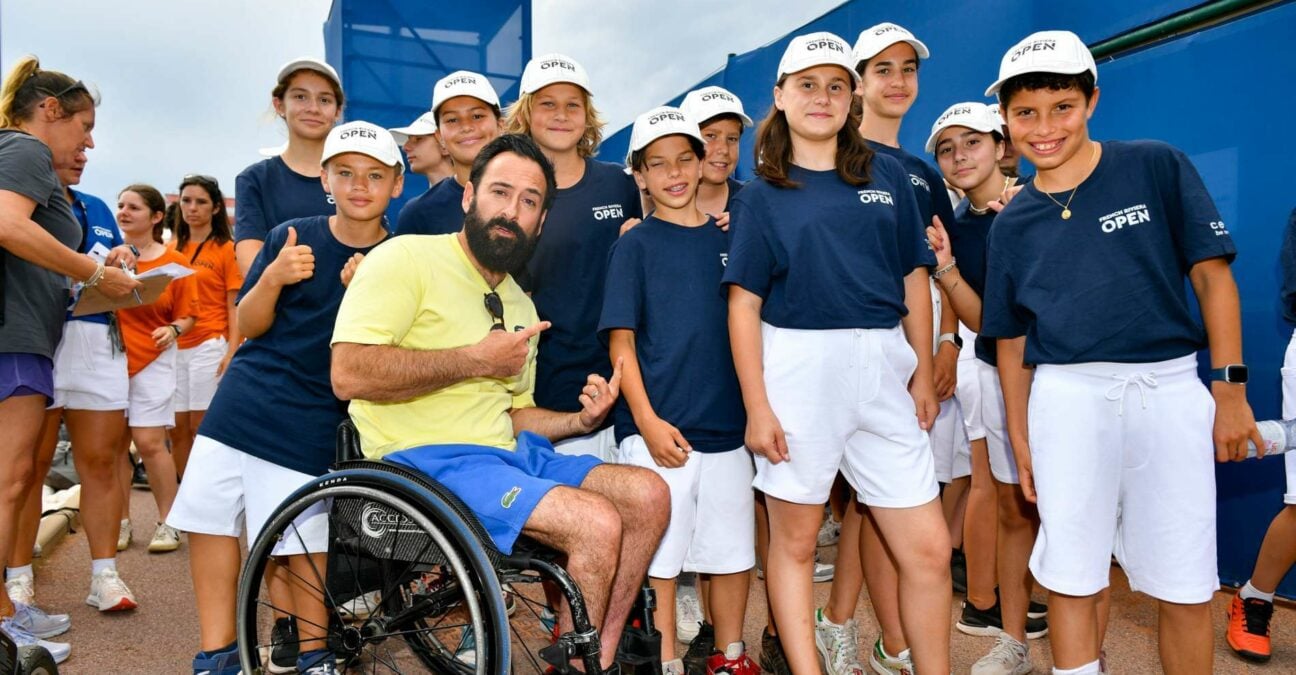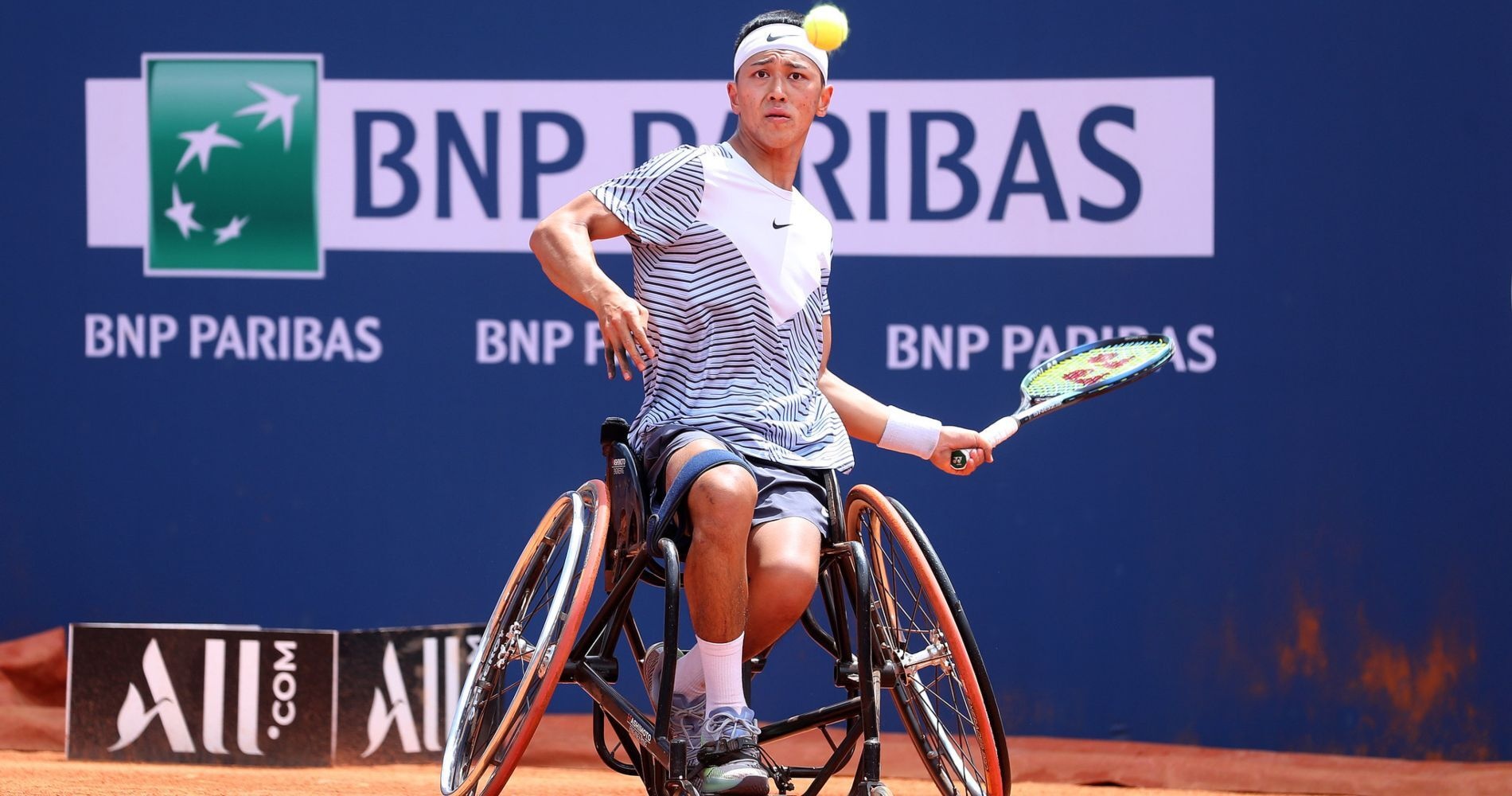French Riviera Open, Canal +, prize-money: seven things every tennis fan should know about wheelchair tennis
The French Riviera Open takes place from June 13 to 18 at the Mouratoglou Academy. An opportunity to learn a little more about the world of wheelchair tennis
 Michael Jeremiasz (D-Echelard / French Riviera Open)
Michael Jeremiasz (D-Echelard / French Riviera Open)
Once again this year, the world’s best wheelchair tennis players are competing on the Côte d’Azur. From June 13 to 18, the Académie Mouratoglou hosts the French Riviera Open, the “world’s biggest wheelchair tennis tournament”, according to tournament director Michaël Jeremiasz.
Part of the ITF circuit, the FRO is classified as a Super Series tournament, the equivalent of a Masters event, and is the event with the most participants: 32 players lined up for the start of the men’s and women’s singles.
This competition has become a must for the greatest players on the circuit. Tokito Oda, world No 1 for men, and Diede de Groot, world No 1 for women, are playing on the clay courts of the Mouratoglou Academy. The venue is far from being chosen at random by Frenchman Jeremiasz, a former world No 1 himself, as it is “the best place in Europe, if not the world, to host this competition.”

While the French Riviera Open continues to grow each year, with the tournament finals broadcast live on Canal + this year and the entire tournament on YouTube, wheelchair tennis is a sport that deserves to be better known.
Here are the answers to seven questions you might have about wheelchair tennis:
What is the difference between wheelchair tennis and conventional tennis?
Wheelchair tennis is a disability sport whose rules are very similar to those of conventional tennis. It is played on the same courts and surfaces. However, players are allowed two bounces before returning the ball. Moreover, since participants use wheelchairs, arm speed and strength are very important, as they enable them to move as well as hit. “The tactical aspect is even more developed than in classic tennis, as you have to think about all your movements,” says Jeremiasz.
Who is wheelchair tennis for?
“Tennis is the disability sport with the fewest different categories,” sums up the former Paralympic champion. There are only two. The “Open” category is open to anyone with a lower-limb disability, while the “Quad” category is for those with both upper and lower-limb impairments.
How do athletes train?
The training of wheelchair tennis athletes is very specific. Obviously, as the upper body is very much in demand, there’s a great deal of muscle strengthening of the arms and cervical vertebrae, as well as strength work for those who can. Secondly, a major part of the work is focused on movement-related exercises. “We do figure eights on the court to ensure we’re always in the right position, it’s like ballet,” Jeremiasz laughs.
Who are the world’s best wheelchair tennis players?
On the men’s side, by winning the French Open final against Alfie Hewett at the age of 17 years and 34 days, Japan’s Tokito Oda became not only the youngest winner of a Grand Slam tournament in the discipline, but also its youngest No 1, following in the footsteps of legend Shingo Kunieda.

On the women’s side, the discipline was often dominated by the Dutch. Esther Vergeer achieved the feat of winning 470 consecutive matches, remaining unbeaten for over 10 years, a record for domination in all sports. One of her compatriots also boasts an impressive winning streak. Diede de Groot remains unbeaten in 103 matches: she has just won the French Open for the third year running.
Does wheelchair tennis get much media coverage?
“Tennis is the most talked-about disability sport in France,” asserts the director of the French Riviera Open. Thanks to the live broadcast of its singles and doubles finals on Canal + and the entire competition on Youtube, it is the first to be broadcast live if we exclude the Paralympic Games. Jeremiasz hopes to go even further: “It’s a question of will. If the media want to broadcast more competitions, people will be more and more interested in our sport.
How professional is wheelchair tennis?
Wheelchair tennis is becoming increasingly professionalised. Thanks to the arrival of major sponsors, and the prize money offered by tournaments, some 15 players on the men’s circuit manage to live solely on their wheelchair tennis income. Unfortunately, the figure is a little lower for women. By way of comparison, the winner of the French Open earns less than a first-round loser on the ATP and WTA circuits. Many players also have a side job.

How does its development in France compare with other countries?
France has a good network of “wheelchair-friendly” clubs and even a national circuit of wheelchair tennis competitions with around 30 events. Despite this, Jeremiasz has not observed “an explosion in the number of licensees” in the discipline. For him, “the Federation is playing the game, but not enough and not fast enough. We need to democratise wheelchair tennis by communicating extensively with young people in particular. France is lagging behind countries like England, Spain, the Netherlands and Japan.”
To continue its development, wheelchair tennis will be able to count on a formidable spotlight. In 2024, the Olympic and Paralympic Games will be held in Paris. For the entire discipline, this global event should serve as an acceleration for the development of wheelchair tennis and disability sport in general in France.













